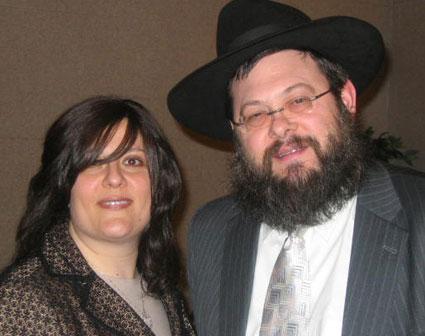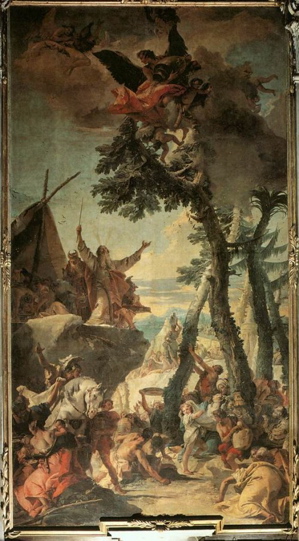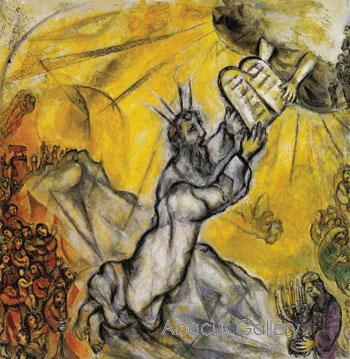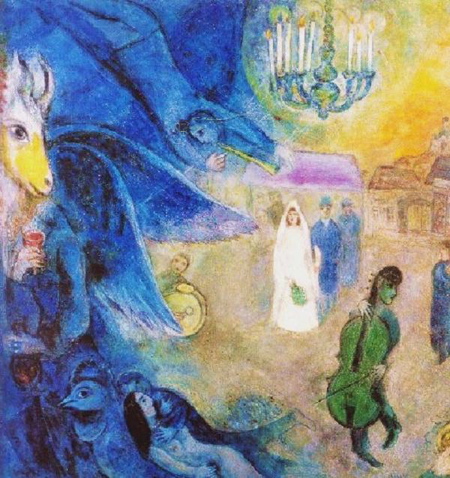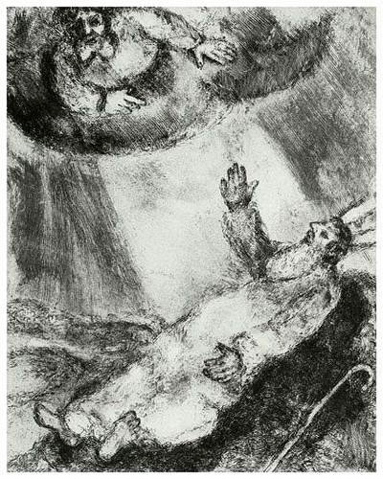16
Aug
I have spent the last two weeks at Bais Chana’s Jewish Studies Retreat for Women in the Twin Cities.
Being immersed in Jewish Learning has been an enriching experience. The women at Bais Chana are supportive of each other as we learn and grow together.
I have filmed myself through some of the activities at Bais Chana. This video gives a snapshot of life at Bais Chana.
It’s 11p.m. My Jewish Study class at Bais Chana just ended.
We read the rebbe’s diaries in Yiddish. We discussed the coming of the Mashiach (the Messiah) and why Chabad Jews go to all corners of the world to reach out to Jews.
On our way out, we found a frog on the glass door, looking in. Maybe he wanted to attend class too.
So we asked him… on camera.
14
Aug
During the Bais Chana’s retreat, I got the honor to attend a Bris Milah, a Jewish circumcision ceremony performed on a 8-day old male infant.
The circumcision ceremony took place in a synagogue on a Sunday.
I barely got to see the circumcision itself since the baby was surrounded by his male family members: father, uncle, grandfather, as well as the mohel, a Jewish person trained in the practice of Brit milah (circumcision). I filmed what I could glimpse of the circumcision, holding my iPad high above my head, and standing in the women’s section of the synagogue. The mother of the baby and other female family members were also in the women’s section.
It was amazing to be immersed in this atmosphere of prayers, songs and joy to celebrate the keeping of a covenant of more than 5,000 years old between the Jews and G-d _ ever since Abraham.
10
Aug
While immersed in Jewish studies at Bais Chana’s retreat for women, a senator walked in.
It was Senator Rudy Boschwitz (R-MN), who negociated the release of Ethiopian Jews in 1991 in Addis Abeba, Ethiopia.
Operation Solomon.
One of the most daring missions in history. It resulted in the successful release of 14,000 Ethiopian Jews, who were flown to Israel within a tight window of opportunity: 24 hours.
The operation had required the combined efforts of the United States and Israel. Senator Boschwitz was the main American negociator.
And my friends and I were lucky to hear the inside story of Operation Solomon.
Enjoy the video!
Brochie Kanelsky is a young Chasidic Jewish woman. She is 21 years old and passionate about serving G-d.
I met Brochie at Bais Chana’s retreat of Jewish Studies for Women. This was her 11th time at Bais Chana.
In this video, she explains what it means to be a Jewish woman of Chabad affiliation.
Dear Nesta.
I hope all is well with you in Sargeant.
I am learning a lot at this retreat of Jewish studies for women. There are women of all ages, who are all passionate about learning. Our classes start at 9 a.m. and end at 11 pm every night. I am barely getting enough hours of sleep. And it is all worth it.
However, yesterday I got frustrated.
We learned about the role of women according to Jewish Law, which is followed to the letter by Orthodox and Chasidic Jews. The emphasis was of course on the woman’s obligation to get married, have children and care for the Jewish home.
“Not getting married at 18 means you’re putting off life,” the Chasidic rabbi said in class.
I felt like I was going to run out of the classroom. I don’t know if the frustration I was feeling was because I was being told that I was not leading a real life or was it because I was wondering _ deep down inside _ if my decision to wait to get married and have children had been a mistake?
Either way, I had to flee the building. On my way to grab my jogging outfit, I met the rabbi. I asked him if wearing pants was appropriate for a woman going jogging. He kindly replied that women usually wear a skirt over their pants.
What?! I thought to myself. Does he know how hot it is out there?
Under normal circumstances, I would have understood. The Chabad dressed code for women is to be covered from the collar bone to the elbows and knees. And not to cross dress. But I was already agitated by the class discussion on marriage and was not so open to listen. I went for a power walk in the woods to calm down.
Today, I am still thinking about the choices I’ve made in my life and the decisions I will face as I learn more about my own faith and heritage.
Shabbat Shalom!
I have decided to go to a Jewish Studies Retreat for Women.
This was my first time immersing myself in Jewish studies and diving into a Jewish environment for a period of time longer than a Shabbat. I was excited.
And I was nervous.
The two-week immersion program is being organized by Bais Chana, which is affiliated with Chabad Lubavitch. Being a conservative Jew, I did not know if I would feel like a fish out of water in an ultra orthodox retreat.
When I arrived at the 5-acre wooded land, the first thing I saw was three women walking down the street. I knew right away they were Orthodox Jews because of their long skirts and long-sleeve blouses.
Oh no! And here I was wearing a t-shirt and pants!
At the reception office, the organizer, with whom I had been in contact with over the phone, gave me a big hug to welcome me. She too was dressed in long sleeves and long skirt, but she did not mind the way I was dressed.
I had nothing to worry about.
A young woman walked into the building pulling a suitcase. She wore black tights and a t-shirt.
“Hi I’m Samantha from New York,” she introduced herself with a big smile. This was her second summer at Bais Chana’s retreat.
I then met a teenage girl from Pittsburg, who studies at a yeshiva.
Then a woman in her 60s walked in; she had flown in from Texas. She wore a hippie version of the long skirt and sleeve: she had on a long jean skirt and a white long sleeve blouse underneath an open shirt.
I realized then that the Chassidic house, with paintings of bearded men on its walls, was welcoming Jewish women of all backgrounds.
All of us have come together with one passion: to study Thorah and immerse ourselves in Judaism. Some are interested in the Talmud. Others in the Mashiach (the Messiah). As for me, I am here to learn prayers and Jewish Law.
On its website, Bais Chana sums up what the next two weeks will bring:
“You may not become a scholar at Bais Chana, but you’ll definitely leave with a more profound appreciation of your identity – as a Jew and as a woman.”
I went shul hopping in Rochester, MN.
The first synagogue I tried was a reform one. It had a big beautiful, modern building that looked promising. On Shabbat morning, my friends dropped me off. I told them the service would probably last three hours.
As soon as I walked in the building, the rabbi said, “The service will be cut short today; I am leaving for the airport right after.”
I looked at her in total shock. She, the rabbi, was taking a plane on Shabbat? This synagogue was way too liberal for me. But since I was already there, I decided to stay for the service.
There were only two other people in the sanctuary: a woman and her soon-to-be-Bar-Mitzvah son. The service was a blur. We had a quick kiddush afterwards of grape juice and cookies. Then I left. I had two hours to kill before my friends returned.
For my next Shabbat in Minnesota, I chose to go to a more traditional synagogue. I found the Chabad-Lubavitch center on 2nd street. The center was a beige two-story house with a giant menorah on the front lawn. The black menorah must have been one-story high.
I pushed the door open _ ignoring the door bell since it was Shabbat _ and entered. There was a big open room on my left, divided by a carved wall partition, the mechitza, separating the men from the women. The rabbi came and welcomed me, showing me the women’s section. I was the first woman. There were two narrow tables with blue siddurim on them. Through the mechitza on my right, I could see the men davening (praying).
The rabbi was funny. Throughout the service, he told stories, made jokes while we waited for more men to arrive and make the necessary minyan (the quorum of 10 Jewish adults) for a complete service.
“We’re going to have a juggler today,” the rabbi announced.
A few minutes later, the young man showed up, soaked to the bone. He had been caught in the downpour outside.
“Do you want a siddur? Do you want a towel?” the rabbi joked.
The juggler made up the sixth men, not enough for a minyan (women did not count in an orthodox shul). So we read the parashah of the week from the Chumash, instead of the sefer torah. It was still a good, spiritual service.
Afterward, the rabbi’s wife invited all of us to the kiddush. The table was abundant with salads, gefilte fish, a big bowl of meat and potatoes and homemade challah and chocolate-chip biscotti. There was wine, grape juice, orange juice and even a bottle of vodka. Being somewhat vegetarian and not much of a drinker, I avoided the meat and the vodka and enjoyed the rest.
At the kiddush table, every story was an opportunity to learn and study. We talked about juggling and how it is mentioned in Jewish texts. The rabbi even went and got a book that described the art during the festival of sukkot.
We also talked about the Jews of Congo and my research on the subject. The rabbi asked if I had been to a Chabad center before. I told him once, in Edmonton, Alberta. The rabbi happened to know his colleague in Edmonton. I was amazed to hear he also knew the rabbi in Kinshasa, Congo.
I had a wonderful time at the Chabad center. The warm and welcoming rabbi and his wife can certainly serve as examples to the rest of us Jews. I look forward to returning to their synagogue next Shabbat.
12
Jun
This week, with the Jewish holidays, I spent a lot of time at the synagogue in Paris. By praying and chanting psalms, you get to a point where you transcend and understand life better.
(11:1) And the people complained…
The Torah passage on Shabbat was in the Book of Numbers, chapter 11.
When the people of Israel left Egypt, they soon started to cry out for food in the desert, so HaShem sent them food. Manna fell out of the sky for them.
But more complaints ensued as they quickly grew tired of manna, saying that things were better in Egypt. The Jewish people bemoaned, “Why did we come out of Egypt.”
“Oh that we had meat to eat! We remember the fish we ate in Egypt that cost nothing, the cucumbers, the melons, the leeks, the onions, and the garlic.” (11:4)
G-d got angry and sent them meat and more meat, meat for “a whole month, until it comes out at your nostrils and becomes loathsome to you.” (11:20)
The people of Israel back in those days made the error of thinking that eating meat will make them happy. They pursued happiness in consumption.
We make the same mistake today.
We tend to acquire material possessions, thinking they will create our happiness. But is happiness really in the latest car or smart phone? Today, we are living in a very materialistic society, yet all our property does not make us happy.
A very good friend of mine in Chicago got up one day, called her friends and gave away all her possessions. This was not a yard sale. Everything was free! For many people, it was like Christmas; they came and took the refrigerator, the TV, the computers, the whole living room set. Everything! When all was gone, my friend said, “Now I can live fully.”
Back at the synagogue, the rabbi explained the people of Israel in the desert did not realize that to lead a happy life, they needed to put themselves in it. They were the spices of their own life. So it was up to them (as it is up to us today) to be creative and make manna taste like fish, melons or chocolate if we want.
We are the most powerful ingredient in our life.
10
Jun
Shavuot is when we celebrate the giving of the Torah on Mount Sinai. I looked forward to celebrating it in Paris the traditional way: staying up all night to learn Torah.
In my Conservative synagogue in Paris, the overnight study began at 8:15 pm. The theme of the discussion was “Does G-d have a body?”
I wondered how this topic would last all night since it seemed to me an open and shut case: Jews are very much against idolatry, so we avoid any corporal representation of G-d.
Speakers were scheduled to examine the various representation and descriptions of G-d in not only Jewish texts, but also historic and literary ones.
The first speaker was a historian of ideas, Mireille Hadas Lebel. She took us through books rarely read among Jews, to see how G-d was described in texts of different time periods. She read excerpts from the book of Daniel (of the 6th Century), which is included in the Writings and not in the books of Prophets. She also read the book of Enoch, a Jewish text no longer used in Judaism, but still very much central to the Ethiopian Orthodox Christians.
And then, to the surprise of the audience, the historian pulled out the New Testament:
“If you want to know Judaism in the 1st Century, read the New Testament,” she explained.
Through all the texts Mrs. Lebel read, we clearly saw a tendency to ascribe a human form to G-d:
_ Giving Him a voice:
“ Adam answered (after having disobeyed), “I heard You in the garden, and I was afraid because I was naked; so I hid.” Genesis 3:10
_ Using a hand or even angels with wings to represent G-d, as was often seen in the works of the Jewish painter, Marc Chagall.
The French Writer and Philosopher Voltaire was right when he said, “If triangles made a god, they would give him three sides.”
At coffee break at 9:45 p.m., we all crowded around the hot drinks and cakes and cookies. The night was young and we needed to take in as much energy as possible.
In the next talks, more discussions of G-d’s representation in Jewish and Israeli art seemed to reinforce these anthropomorphic paintings of HaShem.
Was the hand in Chagall’s painting representing a tiny piece of the unlimitedness of the Divine Being or was it limiting Him into a human form?
People who were present at the foot of Mount Sinai were lucky: they did not have to wonder about G-d’s form. True, they did not see Him, but they certainly felt Him that day through the thick clouds surrounding the mount to shield them.
“But,” He said. “You cannot see My face, for no one may see Me and live.”
Exodus 33:20
One person did see G-d: Moses.
He was the only one who penetrated the clouds and saw HaShem. Maybe that is why, in his painting of the dying Moses, Chagall paints G-d in a human form.
Once again, Voltaire.
“If G-d created us in his own image, we have more than reciprocated,” the writer said.
The study group continued to explore the shape of G-d late into the night. The second coffee break at 11:30pm was not as effective. My eye lids were getting heavier and heavier past midnight.
The last speaker was Rabbi Rivon Krygier. He said if there was one thing and one thing only we should remember from the whole evening of learning was to read Benjamin D. Sommer’s book, “The Bodies of G-d and the World of Ancient Israel.”
Our rabbi was truly a good speaker, engaging us into the discussion.
“Wake up!” He suddenly shouted, waking me up with a jolt. I sure hope I was not the only one in the audience, fading away.
I vaguely remembered him saying that if we wanted to know what G-d felt and looked like on top of Mount Sinai, we simply had to google “volcan de Chili.”
The clouds shielding G-d from the people below must have looked like this volcano eruption.
By 1:30 a.m., my brother came to pick me up. I stumbled out of the synagogue, as the rabbi rightly said, that I was on my way to sink into my own clouds.







